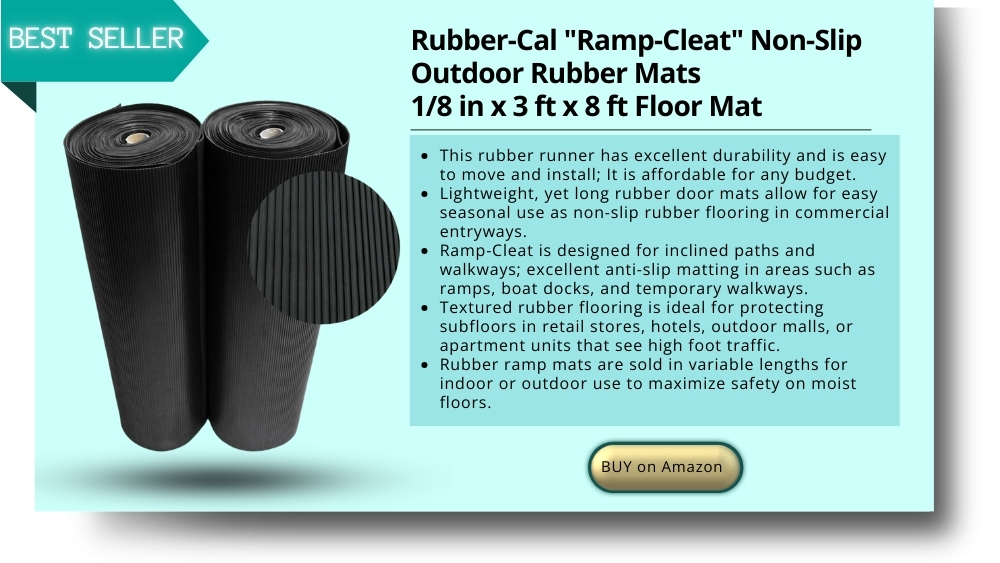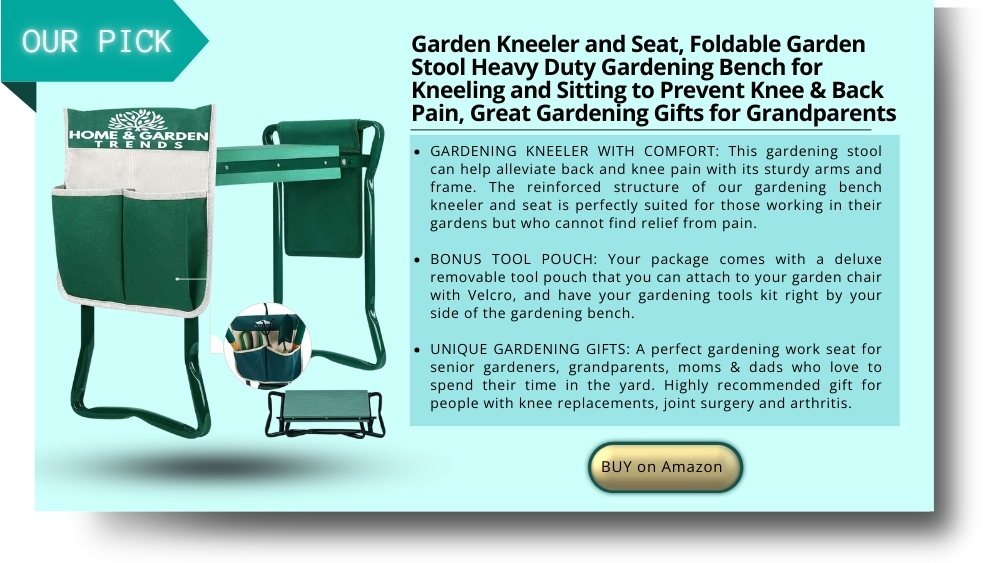As we age, navigating our homes and outdoor spaces can become more challenging. This is especially true for seniors who enjoy gardening, as it can pose a risk of falls and accidents. However, there are ways for seniors to prevent such incidents and continue to enjoy gardening.
In this blog post, we will explore essential tips for senior garden safety, including choosing the right tools and equipment and creating a safe and accessible garden layout. We will also discuss common hazards and offer practical solutions to avoid them.
This post offers valuable tips on safely gardening to help you prolong your enjoyment of this activity, regardless of your level of experience. Following these suggestions is essential for maintaining both your independence and health as you age.

Contents
- 1 Everything You Need To Know About Senior Garden Safety
- 2 The Takeaway
Everything You Need To Know About Senior Garden Safety
Gardening provides seniors with an enjoyable form of exercise, but it can pose health hazards. Garden safety is no joking matter. “It’s all fun and games until someone gets hurt,” goes the old saying.
It’s always easy to see what we could have done differently after the fact. So many accidents that occur throughout the world each day could have been avoided if only people had taken simple garden safety precautions.
Just ask the 300,000 gardeners who land in the hospital from gardening injuries each year in the US alone. If you ensure proper garden safety precautions, you can enjoy the wonderful benefits of your garden in good health.
While it may seem insignificant, bland, and uninteresting to those with only a passing acquaintance with gardens, the past always shapes the present. The history of gardening provides a lush, green, perfumed, and flowery context for the gardens we find ourselves experiencing today.
Prefer to listen rather than read?

Some historians believe that people grew the first gardens purely for visual pleasure and enjoyment rather than as farms on which to grow food. Celebrating symmetry and sensual delights, the ancient Egyptians grew formal gardens exclusively for the relaxation of the wealthy classes.
This might explain part of the purpose of gardens for people today. You do not grow roses so you can eat their blooms. You grow them because you like the way they smell and look. The appearance of the garden in our everyday lives today is so accepted that we embrace its existence for at least one therapeutic purpose.
The garden provides a place in which you can regulate an excess of unwanted feelings – anger, grief, depression, and even exhaustion. In our minds, the garden is always a place of safety. Gardens are tranquil havens that offer solace and rejuvenation, especially for seniors, after all. The joy of tending to flowers, nurturing plants, and basking in the beauty of nature is unparalleled.
That said, ensuring senior garden safety is always paramount. Here are invaluable tips to prevent falls and accidents in senior gardens:
Creating an Accessible Garden Landscape
To ensure garden safety, start by creating an accessible and inviting garden landscape. Begin by designing pathways, furniture, and lighting that cater to the unique needs of seniors.

Clear Pathways: Ensuring Unobstructed Routes for Senior
In senior garden safety, the significance of clear pathways cannot be overstated. These routes serve as the lifelines of a secure and enjoyable garden experience.
The potential for mishaps and accidents looms when obstacles clutter the way—be it rocks, unruly tree roots, or scattered garden tools. A vital guideline to remember: paths must be pristine, free from any stumbling perils.
A proactive approach to garden safety is a must—meticulously eliminate debris, such as fallen branches, leaves, or remnants from gardening endeavours. This practice accomplishes two key objectives: averting falls and accidents and affording seniors smooth and secure passage through the garden’s splendour.
As another saying goes, “A clear path leads to a clear destination.” And in the context of senior garden safety, it also leads to peace of mind and unhindered enjoyment.
Install Handrails and Grab Bars
Undoubtedly, senior garden safety holds equal importance, particularly for our cherished seniors who may be more susceptible to mishaps while immersed in the joys of gardening. Among the arsenal of preventative measures, one standout strategy is the installation of handrails and grab bars—a simple yet powerful solution.
These modest fixtures serve as reliable allies against the potential pitfalls of gardening. With handrails thoughtfully placed along pathways and near garden features, seniors are bestowed with an added layer of support.
The act of bending down, reaching, or transitioning between surfaces becomes a safer endeavour, bolstered by the reliable steadiness of handrails.
Grab bars offer a strategic advantage, aiding in maintaining balance and providing a reassuring grip while navigating uneven terrains. These discreet aids are essential for any senior gardener’s safety checklist.
The Crucial Role of Non-Slip Surfaces in Mitigating Falls During Senior Gardening
Amid the tranquil embrace of gardening, a world where nature’s beauty thrives lies an underappreciated concern—falls among seniors. A pivotal solution, often overlooked, is the incorporation of non-slip surfaces—a modest yet paramount measure that can redefine the senior garden safety landscape for our cherished loved ones.

As we delve deeper into senior gardening, the significance of non-slip surfaces in ensuring garden safety becomes abundantly clear. These unobtrusive materials stand as sentinels against the unpredictable terrain of gardens, offering a steadfast grip even when conditions turn slippery.
Picture pathways lined with rubberized mats, defying moisture challenges and offering reliable traction. Envision textured pavers ensuring secure steps, regardless of external factors. Non-slip surfaces are essential for senior garden safety.
Statistics reveal a concerning reality – a quarter of older adults experience annual falls, often resulting in injuries sustained in gardens. This emphasizes the critical importance of ensuring garden safety. Incorporating non-slip surfaces in senior gardens not only aids in prevention but also enhances resilience and empowerment.
Choosing Senior-Friendly Garden Equipment
Crafting a garden haven tailored to the needs of our beloved seniors requires a strategic approach to furniture selection. Here, we unveil the art of choosing senior-friendly garden furniture, where every element resonates with ergonomic grace and unwavering security.

Ergonomic Seating: Elevating Comfort and Support
Ergonomic seating for seniors in gardening ensures design, comfort, and safety. Opting for garden furniture with ergonomic designs goes beyond making a choice; it signifies a dedication to well-being.
Chairs and benches that balance form and function offer adequate back support, allowing seniors to garden without jeopardizing their spinal health. Ergonomic design now incorporates cushions, adding a touch of luxury while also providing comfort and preventing pressure sores during garden leisure.
Table Heights: Pioneering Comfort and Ease
Exploring further, a subtle yet crucial aspect comes to light: the significance of table heights. It becomes evident that the careful consideration of this senior garden safety detail exemplifies our dedication to every facet of seniors’ gardening experience.
By crafting garden tables tailored to seniors, set at just the right height, we emphasize our commitment to their well-being. This deliberate decision serves to alleviate the discomfort of excessive bending, which could otherwise strain their backs.

The act of sparing them from this unnecessary physical exertion reveals our deep understanding of their needs. Adjusting table heights is crucial for creating an environment that supports seniors’ hobbies and protects their health.
Wear Appropriate Footwear
One of the most important aspects of senior garden safety is wearing appropriate footwear. It may seem like a small detail, but the wrong shoes can increase the risk of falls and accidents.
When working in the garden, it’s important to wear shoes that fit well and provide good support. Avoid sandals, flip-flops, or shoes with slippery soles, as these can cause you to lose your footing on wet or uneven ground. Instead, opt for closed-toe shoes with a good grip on the sole.
Additionally, make sure your shoes are comfortable and allow you to move freely, as stiff or ill-fitting shoes can cause discomfort and lead to tripping or stumbling. Remember, taking the time to choose teh right footwear can go a long way in preventing accidents and keeping you safe in your garden.
Organized Gardening Tools
As a fundamental aspect of our comprehensive guide, we emphasize the utmost importance of organizing your gardening tools.
This practice not only streamlines your gardening endeavours by making tools easy to locate but also significantly contributes to accident prevention. The potential dangers of scattered tools in the garden or on the lawn are not to be underestimated—tripping and falling over them can result in unnecessary mishaps.

To mitigate such risks, we strongly advocate for the use of a sturdy tool shed or storage container. This designated space acts as a central hub for all your gardening implements, ensuring they remain in one secure location.
In addition, employing hooks or racks proves highly beneficial, especially for larger tools such as rakes and shovels. By hanging these items, you not only conserve space but also reduce the risk of inadvertent trips or stumbles.
Regular inspections of your tools are essential. Be vigilant in checking for any signs of damage or wear and tear. Should you come across any compromised tools, make it a priority to either repair or replace them promptly. This proactive approach guarantees that your tools remain in optimal condition, enhancing their functionality and senior garden safety.
By meticulously organizing your gardening tools, you lay the foundation for a gardening experience that is not only productive but also safeguarded against unnecessary hazards. Your commitment to maintaining an orderly tool setup showcases your dedication to creating a safe and enjoyable gardening environment.
Nurturing Safety Through Plant Selection and Garden Care
In senior garden safety, the careful selection of plants and meticulous garden maintenance create meaningful harmony. Each choice and pruning reflects our deep commitment to the well-being of our beloved seniors.
Strategic Plant Placement: Paving the Way for Safe Passage
The arrangement of plants within the garden is a process of meticulous precision—an intricate part that not only enhances aesthetics but also significantly reduces potential risks, fostering heightened accessibility.
The strategic placement of plants not only enhances the visual harmony of the garden but also guarantees secure and pleasant steps within its peaceful boundaries. This harmonious combination of aesthetics and safety establishes a haven where the beauty of nature coexists with unhindered movement.
Pruning and Trimming: Sustaining Tidiness and Security
Maintaining a garden requires consistent pruning and trimming to maintain its beauty. Overhanging branches are carefully sculpted to prevent any entanglement, while dead leaves are removed in a timely manner to reflect the changing seasons.
This level of attention to detail goes beyond aesthetics, as it also ensures a safe and tidy landscape. Regular maintenance instils a sense of confidence among seniors as they enjoy their garden sanctuary.

Thorn-Free and Allergen-Conscious Choices: A Harmonious Sanctuary
The plant selection palette is a vital element taht combines safety and sensory pleasure in a garden. A well-thought-out selection of plants creates a harmonious and peaceful environment that enhances the gardening experience.
Seniors should prioritize the use of non-thorny and non-allergenic plants to ensure their safety and well-being. This approach not only prevents unexpected injuries and allergic reactions but also elevates the gardening experience to a stress-free and enjoyable activity.
Stay Hydrated While Gardening
An uncomplicated yet highly impactful strategy for enhancing the safety of senior gardening involves prioritizing hydration. The physically engaging nature of gardening can often lead to dehydration, sometimes without us even recognizing it. To counter this, ensure a ready supply of water or hydrating beverages within arm’s reach while tending to your garden. Furthermore, incorporate the practice of taking regular breaks to rehydrate.

To aid those who tend to overlook their hydration needs, consider setting up reminders. Utilize timers or smartphone apps that prompt you to take a sip at intervals. This proactive approach serves as a friendly nudge to keep your hydration in check and safeguards your well-being during gardening sessions.
In gardening, proper hydration is a crucial aspect that should never be overlooked. It may seem small, but its benefits are immeasurable.
Know Your Limits And Rest
In gardening, it’s crucial to acknowledge your personal boundaries and practice timely rest. While gardening brings joy and fulfilment, it’s essential to recognize its physical demands, which often encompass bending, kneeling, and lifting. Attuning yourself to your body’s signals and embracing well-timed breaks is paramount.
Should weariness or discomfort set in, don’t hesitate to pause and rest for a brief respite. This measured approach is a pivotal aspect of safeguarding your well-being amid the gardening experience. Equally important is maintaining proper hydration, ensuring you consume ample water throughout your gardening session to replenish lost fluids.

Remember to incorporate shade breaks as well, effectively avoiding the risk of overheating. By seeking shelter from the sun’s intensity, you provide your body with an opportunity to cool down and recuperate, furthering your garden safety efforts.
The practice of knowing your limits and embracing rest serves as a powerful mechanism against fatigue and reduces the likelihood of accidents or falls. This subtle approach not only preserves your physical equilibrium but also deepens your appreciation for the gardening journey, creating a harmonious balance between vitality and relaxation.
The Takeaway
Accidents and falls can occur to anyone, but seniors are at a higher risk due to age-related changes, however, by implementing basic safety measures while gardening, seniors can greatly diminish their risk of falls and injuries.
While it’s crucial to be aware of potential hazards, it’s also important not to let the fear of accidents hinder seniors from relishing their gardens and outdoor activities. By adhering to these tips and tricks, seniors can continue to safely and confidently enjoy their gardening hobby.



